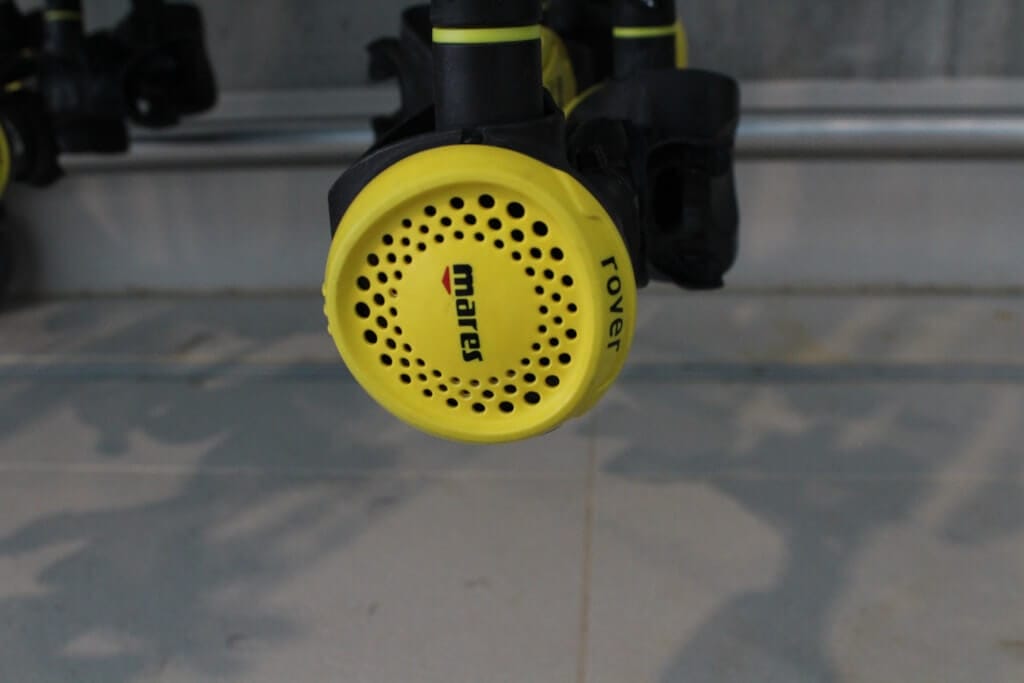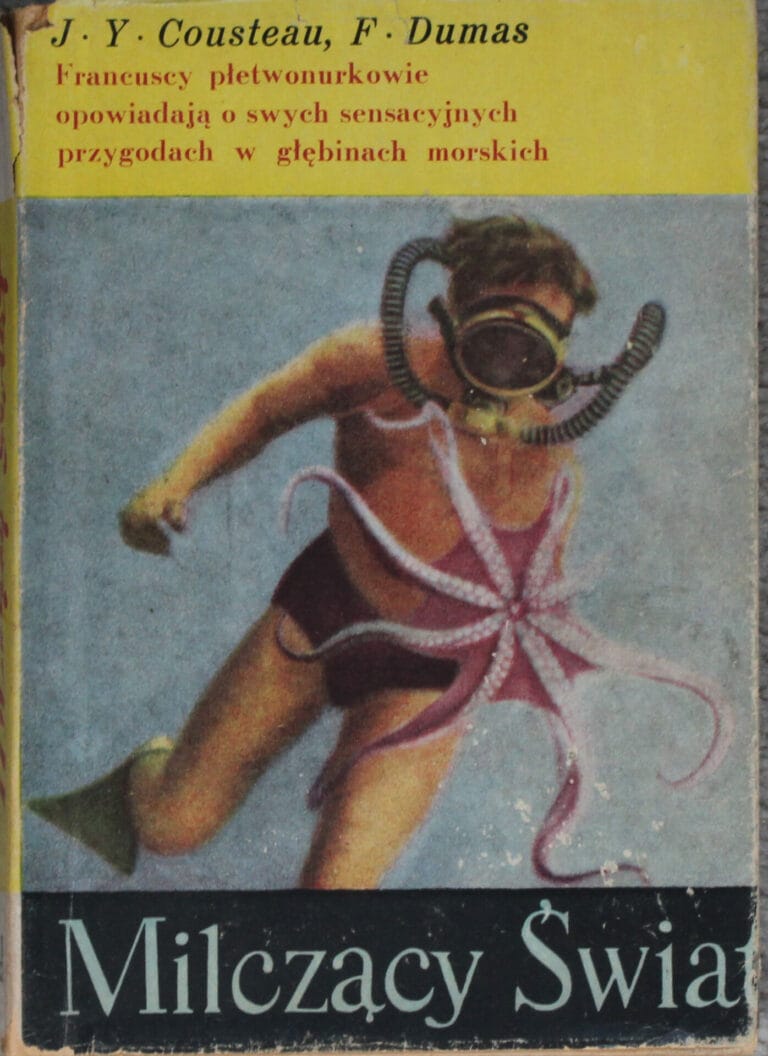Finally, after discussing the types of automatics and their servicing, let’s describe the different types of alternative gas sources underwater (as an exceptionally precise diver would say), or octopuses as slang would say.
Octopus
In general, a typical octopus what it is everyone can see. This is simply an additional II stage connected to the same I stage (photo. Typical automatics with octopuses – the first photo in the article).
It has many advantages, it is easy to install, inexpensive (only an additional 2nd stage), easy to operate it and widely used so everyone knows how to operate it.
The advantages of the Octopus are its simplicity, low cost, ease of placement next to equipment and a certain standardization most divers know how to use it.
The disadvantages of the Ocopus become apparent when you have to cruise for longer horizontally after a breakdown for some reason. The relatively short octopus cable requires close and good cooperation between the two divers. Prośxiei if you can immediately emerge.
Backup air source on the inflators
A spare automatic integrated with the inflators (photo. Air II) can also be used to share air. However, the inflator hose is short enough that the donor switches to breathing from his integrated inflator, giving the airless diver his primary automatic. Some divers use their primary automatic on long hoses which provides more air sharing. The advantage of the solution is its simplicity. Memes less equipment – it is lighter. The disadvantage is some non-standardization and the fact that we have to hand over the automatic from which we breathe and give it to our partner and we ourselves go to the second stage on the Jacket inflators.

Spare Air
When we want to combine self-sufficiency but do not have access to a system with a second cylinder because, for example, we are on a typical diving trip with typical recreational equipment but not really able/willing to count on a partnership (underwater photographer, guide, etc.) then a small independent cylinder with an automatic (photo. Spare Air) is an interesting solution. Yes the bottle with its automatic on top of the cylinder valve allows you to take only a dozen breaths but enough for a smooth emergency ascent. We are independent of the group and partners. This can be useful in certain situations. As you are an underwater photographer you can consider such a solution.

Additional second automatic – separate second stage
In configurations adapted for diving in situations where greater self-sufficiency is needed to deal with emergencies, we use more elaborate configurations than the one with an octopus. Such configurations are normally used by divers who, because of the dives they make, use a sidemount or twine (Separate II degrees in a sidemount configuration).
When a diver needs to be self-sufficient he must have his own separately supplied with gas Alternative source that is not an octopus that is connected to the same cylinder only a separate second automatic. Separate I and II stage pressure gauge often a hose to supply a second source of buoyancy, such as a second bag in the wing. Often the second vending machine – the one intended for serving is on a long sometimes even 2-meter long cable. This allows divers to swim one behind the other in case of an emergency. In this case, the recipient swims in front.

Two cylinders and two vending machines
Although it is possible to meet that someone uses two separate automatics on a double bore on a single cylinder, but it is a rather rare solution. A little safer than a single automatic with an octopus but definitely not as good as two cylinders with two automatics. Such completely separated air sources, i.e. two cylinders, each with its own automatic whether in the form of a twine or two sidemount cylinders, is something recommended especially in severely cold water where the risk of the automatic freezing and gas escaping from the cylinder is quite high.
Typical two solutions are Twin and sidemount.
Twin
Twin is a slang term for two cylinders carried on the back connected by a link to a seperator. This type of valve allows you to plug in two independent automats, but at the same time, in case of failure of one of the automats; after turning off the valve at this automat from the second automat you can continue to take gas from both cylinders. In addition, the separation valve on the connector of the two cylinders allows you to efficiently separate the two cylinders in the event of a failure of the automat and escape of gas – it escapes only from one cylinder. However, such a solution has a disadvantage – although this applies to the extremely unlikely failure. In the event of a separator failure, you can imagine the loss of gas from both cylinders. Such a disadvantage does not have a solution with two cylinders without connecting them, that is, the so-called – independent double.
A solution that uses two completely separate cylinders is sidemount.
Sidemount
Sidemount is a system that was created for cave diving to allow squeezing through narrow terminals. The system consists of two cylinders attached to the sides of the diver with easy detachment. Each cylinder has its own automatic pressure gauge. One automaton (on the left cylinder) has a short hose; the other automaton (on the right cylinder) has a second stage on a long hose to allow you to swim with a partner and stack one behind the other. Since the cylinders do not have a coupler, the diver must regularly swap the automatics to consume air from both cylinders fairly evenly. Sidemount also has the advantage over twine of very easy access to the valves. It is much easier to turn off the valve in case of failure (excitation/freezing) of one of the automatics.
With both the twine and the sidemount system, the moment a partner diver needs air, the donor gives him the second stage taken out of his mouth on the long hose and himself switches to the second stage on the short hose hanging around his neck.










